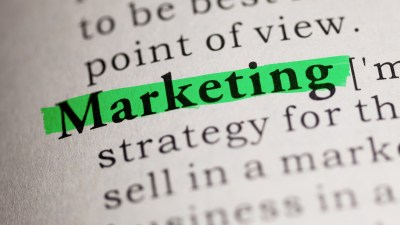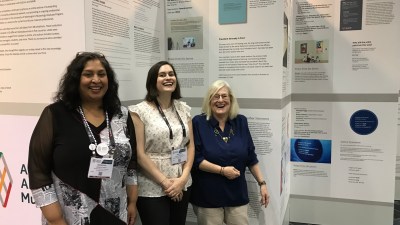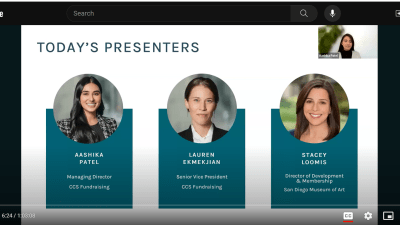
Support Free COVID-19 Resources for the Field:
The current crisis is taking a distressing financial toll on cultural organizations, and AAM is no different. The Center for the Future of Museums is supported by AAM membership and donations. In these challenging times, we ask that if you can, consider making a donation or becoming a member of AAM. Thank you for your much-needed support.
The museum sector is just beginning to assess the impact of closures, travel bans, cancellation of major events, and the implementation of social distancing. When you have time to take a breath and plan for long term financial recovery, I hope TrendsWatch: The Future of Financial Sustainability is a useful tool for your planning. However, I know you need more immediate assistance as well. In this post I share a collection of resources and information to help you create short-term strategies for navigating the coming weeks and months. My colleagues and I will be updating this list on AAM’s COVID-19 Financial Relief and Resources page. If you have resources or examples to add to this section, please contact me at emerritt (at) aam-us.org.
Stay safe, stay strong, stay sane,
Elizabeth
Elizabeth Merritt, VP Strategic Foresight and Founding Director, Center for the Future of Museums
Coronavirus Aid, Relief, and Economic Security Act (CARES Act) (S. 748)
The CARES Act provides significant funding for nonprofits, businesses, hospitals, schools, and social support programs, among many other things. For the latest updates on the ACT and its implementation, visit the AAM COVID-19 Financial Relief and Resources page.
Federal tax relief
The U.S. Treasury Department, Internal Revenue Service (IRS), and the U.S. Department of Labor (Labor) have announced that small and midsize employers can begin taking advantage of two new refundable payroll tax credits, designed to immediately and fully reimburse them, dollar-for-dollar, for the cost of providing Coronavirus-related leave to their employees. This relief to employees and small and midsize businesses is provided under the Families First Coronavirus Response Act (Act), signed by President Trump on March 18, 2020. The Act gives all American businesses with fewer than 500 employees funds to provide employees with paid leave, either for the employee’s own health needs or to care for family members. More information on the tax credit is available here.
Relief funds
Giving Compass and National Center for Family Philanthropy (NCFP) have compiled together a vetted list of COVID-19 relief funds. As of 3-27-20 this list includes 100 funds established to address immediate and long-term needs related to coronavirus and COVID-19. Also monitor this spreadsheet of relief funds being compiled by the Council on Foundations.
Philanthropy
A large number of foundations recently created and signed a pledge to provide their grantees with “the flexibility and grace to respond quickly and confidently in this critical moment.” These foundations have also expressed a willingness to provide funding for organizations they do not currently fund. The commitments of those foundations signing the pledge include:
- Loosening or eliminating the restrictions on current grants. (This can include converting project-based grants to unrestricted support; accelerating payment schedules; and not holding grantees responsible if conferences, events, and other project deliverables must be postponed or canceled.)
- Making new grants as unrestricted as possible, so nonprofit partners have maximum flexibility to respond to this crisis. We will also support organizations created and led by the communities most affected that we may not fund currently.
- Reducing what they ask of nonprofit partners, postponing reporting requirements, site visits, and other demands on their time during this challenging period.
Financial advice and resources for nonprofits
The DeVos Institute for Arts Management at the University of Maryland has create a list of some practical steps during a time of uncertainty, including actions to take with funders, vendors, ticket holders, creditors, and lenders.
Check out these considerations on marketing during COVID-19 closures, from Colleen Dilenschneider of IMPACTS research.
The Chronicle of Philanthropy has published Help for Nonprofits During the Coronavirus and Uncertain Economic Times, a free selection of articles from its archives. This collection includes essays on teleworking, engaging major donors, helping the vulnerable, and coverage of how foundations are responding to the need for COVID relief.
Examples of museum adaptations
Some museums are converting upcoming fundraising galas into digital events:
The Hermann-Grima + Gallier Historic Houses in New Orleans is moving their annual Wine Fête online, complete with silent auction, and encouraging attendees to participate from home (with a glass of wine, of course).
The Tenement Museum’s virtual gala, to be held online the evening of April 28, will offer attendees a short, informal digital program and the option of receiving “a Lower East Side box dinner when things return to normal.”
The Japanese American National Museum’s virtual gala will include a livestream program during which they will announce the winner of their raffle (the prize is a 2020 Lexus RX 450h!), hold an online auction, and solicit donations for their education programs.
Pairing free content with fundraising
Museums collectively are doing a great job of helping their communities cope with quarantines, school closures, and stress via online content. This is a great way of remaining engaged with audiences (and potentially win new fans) but for the most part does not bring in direct income. Some museums are pairing free content with a request for donations to help support their work. See several examples on this page linking to live streams and virtual content from museums on Chicago’s Magnificent Mile.
Salary reductions and layoffs
Some museums are combining salary reductions with layoffs, while maintaining benefits for staff for as long as possible. For example, MASS MoCA in North Adams, Mass., is laying off 120 of its 165 employees, effective April 11. They are retaining employees responsible for fund-raising, facilities management, and planning for the organization’s re-launch. The remaining employees are taking voluntary reductions in work hours or reductions in salaries of 18%-28%, with upper level management, including the director, taking the biggest cuts. Employees who are will be covered by the museum’s health plan through July 31, with MASS MoCA covering 100 percent of the premiums. To fund these benefits, along with salaries for remaining staff, the board of trustees approved a special emergency draw from the museum’s board-restricted endowment.









Comments